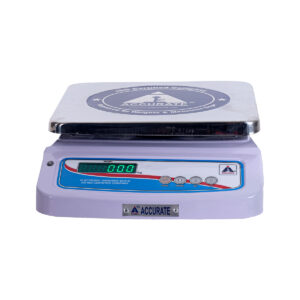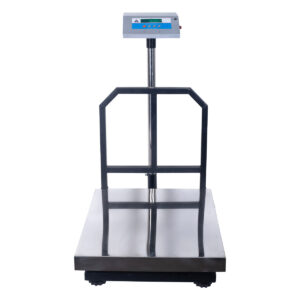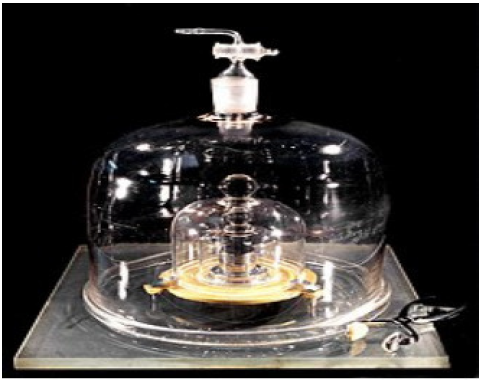The Kibble balance, seen in last issue, is a more accurate version of the ampere balance, an early current measuring
instrument in which the force between two current-carrying coils of wire is measured and then used to calculate
the magnitude of the current. The Kibble balance operates in the opposite sense; the current in the coils set very
precisely by the Planck constant, and the force between the coils is used to measure the weight of a test kilogram
mass. Then the mass is calculated from the weight by accurately measuring the local Earth’s gravity (the net
acceleration combining gravitational and centrifugal effects) with a gravimeter. Thus the mass of the object is
defined in terms of a current and a voltage— allowing the device to “measure mass without recourse to the IPK
(International Prototype Kilogram) or any physical object”.
Basic principles of the Kibble balance, a device that can be used to measure mass.The International Prototype Kilogram, stored in a vault in Paris, was replaced in 2019 by a formula that uses the
Planck constant, since the IPK was losing mass.Prior to 2019, the definition of the kilogram was based on a physical
object known as the International Prototype of the Kilogram (IPK),It’s
the mass of a hunk of platinum-iridium alloy that’s been housed at
the International Bureau of Weights and Measures in Sèvres, France
since 1889. It’s called the International Prototype Kilogram (a.k.a. Big
K, or Le Grand K), and it has many copies around the world . After
considering alternatives, in 2013 the General Conference on Weights
and Measures (CGPM) agreed on accuracy criteria for replacing this
definition with one based on the use of a Kibble balance. After these
criteria had been achieved, the CGPM voted unanimously on
November 16, 2018 to change the definition of the kilogram and
several other units, effective May 20, 2019, to coincide with World
Metrology Day. One important reason for the change is that Big K is
not constant. It has lost around 50 micrograms (about the mass of an
eyelash) since it was created. But, frustratingly, when Big K loses
mass, it’s still exactly one kilogram as per the current definition.
Archives
Recent Posts
December 13, 2024
August 30, 2024
August 28, 2024
Products
-
 AMV 33 Value Counting 3D Scanner
₹5,000.00
AMV 33 Value Counting 3D Scanner
₹5,000.00
-
 SS Stone Weight
₹400.00
SS Stone Weight
₹400.00
-
 ATB / ATC - E Series Without Pole
₹3,000.00
ATB / ATC - E Series Without Pole
₹3,000.00
-
 SS PAN - Metal Indicator
₹3,000.00
SS PAN - Metal Indicator
₹3,000.00
-
 Elcom Switches
₹3,000.00
Elcom Switches
₹3,000.00
Newsletter
Subscribe to our mailing list to get the new updates!



